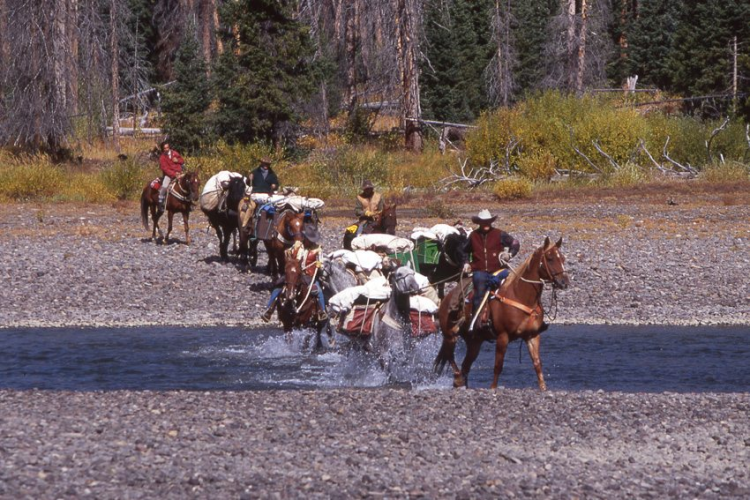
Taking into account the various pack strings that worm away at erosion to a level beyond acceptable if bicycles held the potential to do near the damage - and the noxious weeds introduced via pack sting crap from their home turf feed and feed that allegedly meets the standards rarely evaluated at fields, none the less in the field for consumption. Yet, a bias is present with a blind eye towards our own appreciation for the use of pack animals in the back country.
I am supportive of pack animals though to frown on hikers / cycles and other human travel while ignoring our own impact is... the beam in our own eye. (Reference to Matthew 7:3)
IMO, Hiking Yellowstone, Grand Teton, Glacier National Park present a limited "consequence" when comparing the natural apex predators who push doe/cow calving to scientific findings of notable declines.

Greater Yellowstone elk suffer worse nutrition and lower birth rates due to wolves
Wolves have caused elk in the Greater Yellowstone Ecosystem to change their behavior and foraging habits so much so that herds are having fewer calves, mainly due to changes in their nutrition.
However, be that as it may, our country, post covid, has brought an onslaught of city people to our country doorstep. If we do not form collective cooperation for trail, forest use, our desire to keep a human minimal impact will be drowned out by those en-masse who've not found an educated council to unify outdoor interests.
Want to use a platform to assist the future of our greater outdoors - we need stop playing enemy vs enemy and find unity where leaders in the cycling industry, pack animal users, backpacker, snowmobile, hunter, cross country skiers - collectives understand the the impacts from biologists, and how to define use to protect our ungulates - as much as our encroaching society continues our parasitic reach deeper into wildlife territory.





